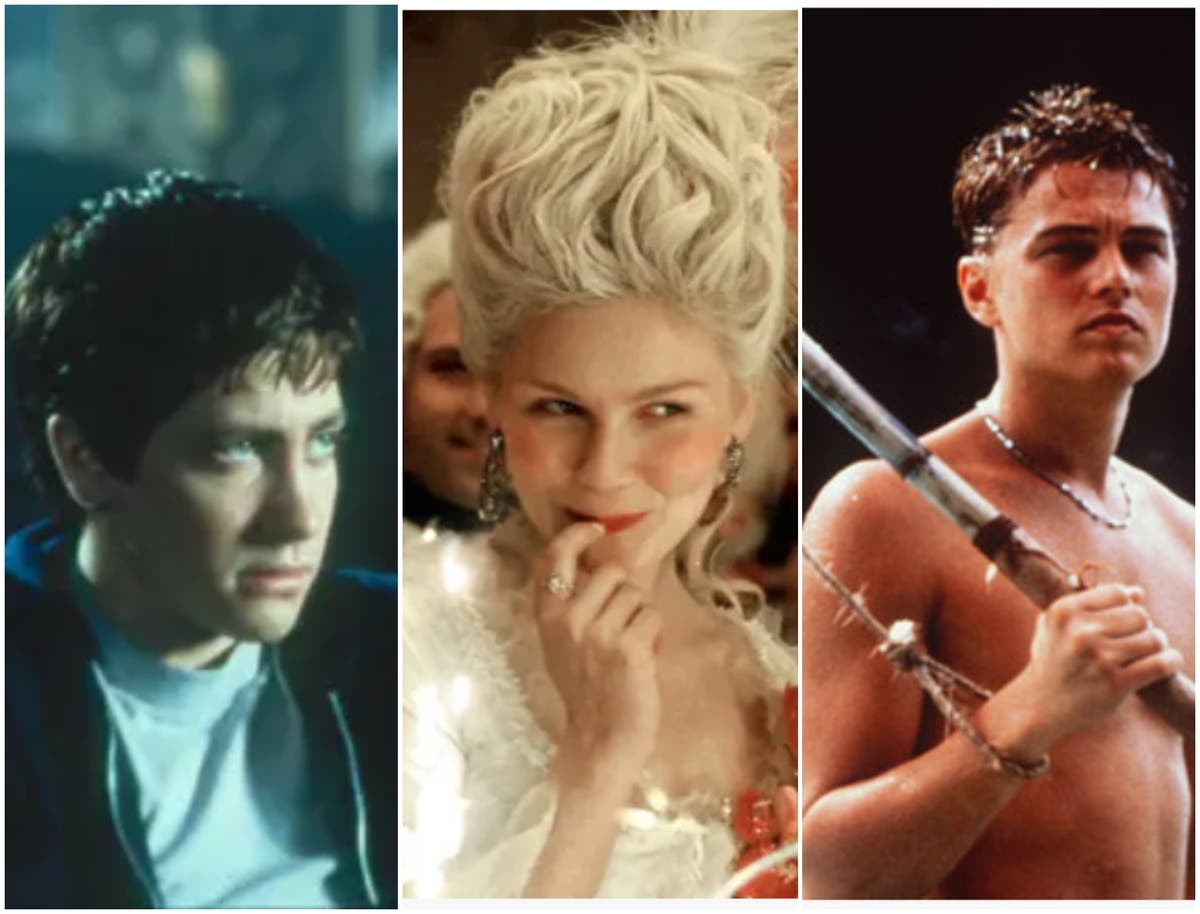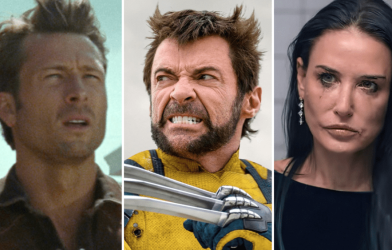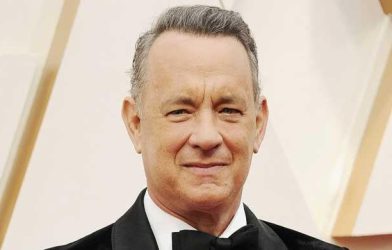The music that features in a film can be as moving, essential or memorable as any line of dialogue or actor’s performance. A great soundtrack often transcends the film it first appeared in, whether it was comprised of pre-recorded songs by known artists, or original tracks that went on to become long-lasting hits.
Since 2019, film soundtracks have become as synonymous with the Top 10 charts as Ed Sheeran, Drake or Ariana Grande. But before The Greatest Showman and A Star is Born, there have been scores that have become etched into the cultural zeitgeist because they captured moments that spoke to us long after the final credits roll.
Whether it’s moody guitars of Seattle’s grunge scene that served as the backdrop for Cameron Crowe’s Singles, the euphoric trance in The Beach, or the teenage angst of British post-punk rock on Pretty in Pink: so many films would be nowhere near as good without the music that accompanied them.
From Pulp Fiction to Guardians of the Galaxy, here are the 40 greatest film soundtracks of all time:
40. High Fidelity (2000)
Before Garden State and 500 Days of Summer, the team behind the adaptation of Nick Hornby’s novel compiled 15 tracks like a mixtape. It was one its picky lead character would have approved of. As with many of the soundtracks on this list, High Fidelity’s success lies in a balance between old-school gems from The Kinks and Elvis Costello to Noughties newcomers including Stereolab and Royal Trux.
39. Dirty Dancing 2: Havana Nights (2004)
This may seem like sacrilege given that the first Dirty Dancing soundtrack is undeniably the more iconic of the two. And yes, the sequel (essentially a remake set in Cuba during the 1950s), starring Romola Garai and future Rogue One star Diego Luna, suffered from a plot loaded with clichés and lack of chemistry between its two lead actors. But the soundtrack – featuring the Grammy-nominated Latin fusion band Yerba Buena, Colombian rock band Aterciopelados, and the Cuban hip hop group Orishasis – is what draws me back to this guilty pleasure of a film. Dirty Dancing 2 didn’t really deserve such a soundtrack, but it adds some actual heat to a film that, asides from the superb dance routines, leaves you cold.
38. Goodfellas (1990)
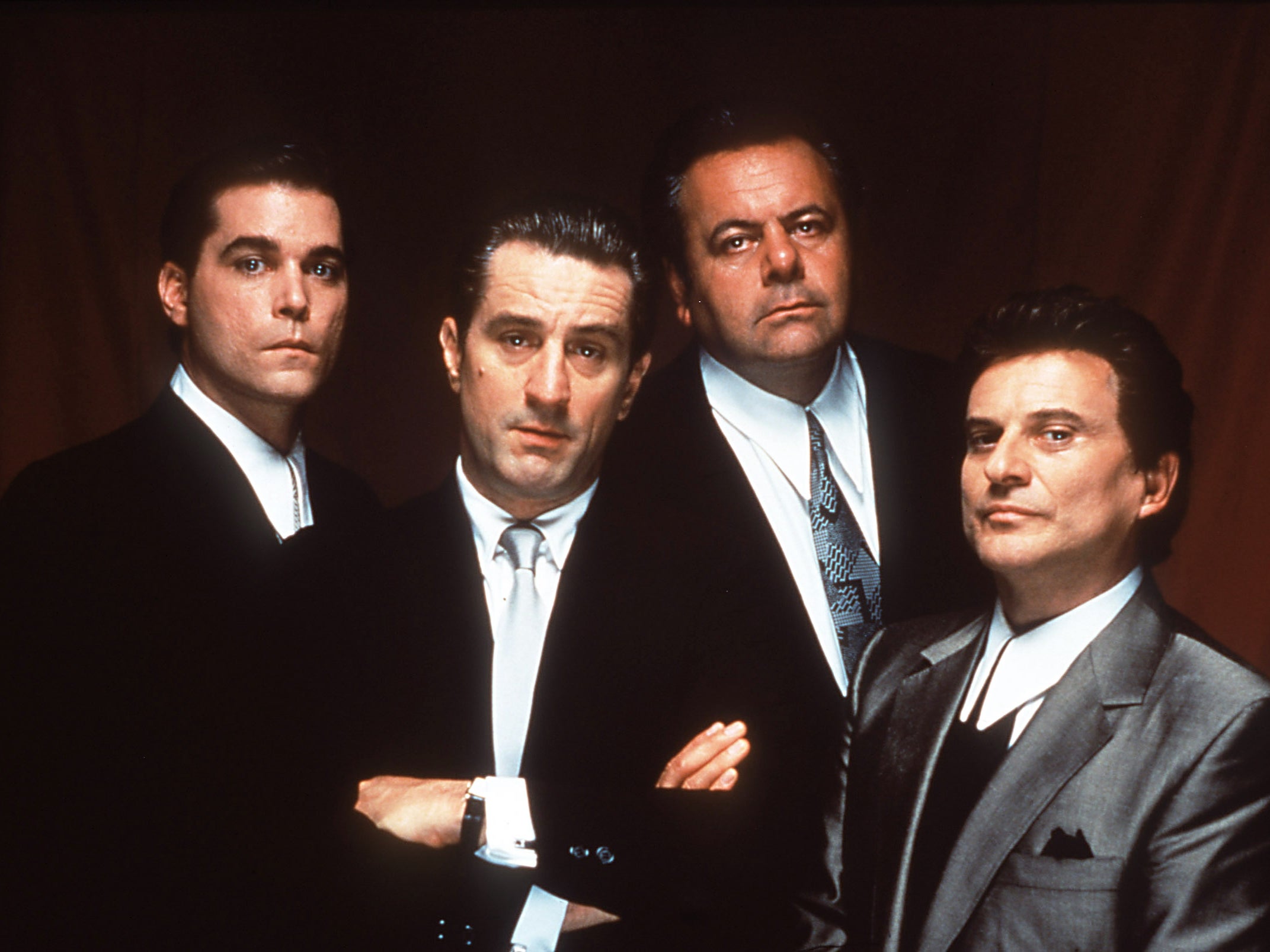
Martin Scorsese had strict rules for the soundtrack to his film Goodfellas: each song had to have been around during the time in which the scene was set, and the tracks had to make some kind of comment on the scene or character in question “in an oblique way”. A staggering 48 songs are heard during the film, including classics by Dean Martin, Fred Astaire and The Drifters, Sid Vicious, The Who and The Rolling Stones. One of the most unforgettable moments is when Bobby Darin’s “Beyond the Sea” plays as the Wise Guys cook dinner, which was “always a big thing” in prison.
37. Scott Pilgrim vs The World (2010)
When it comes to soundtracking your movie, it helps if the director is a massive music nerd. Of course, music was always going to play a huge part in a film about a boy in a band and his video game quest to win the girl of his dreams. But Edgar Wright, a former music video director, found a way to seamlessly integrate his soundtrack into Scott Pilgrim vs the World’s narrative. Beck, who wrote the music for Scott Pilgrim’s garage band Sex Bob-omb, was a perfect match for their chaotic, DIY approach, while Metric’s song “Black Sheep” was used for a performance by ex-girlfriend Envy Adams’s (Brie Larson) band The Clash at Demonhead.
36. Drive (2011)
Drive wouldn’t have worked as well as it did without the soundtrack. Steven Soderbergh’s go-to composer Cliff Martinez assembled the songs for Nicolas Winding Refn’s ambitious indie project, showing an understanding that the most effective soundtracks are often the ones that transport you into the movie without you realising. By using a set of mostly female vocalists, all of whom sing over stark, often ominous electronic beats, Martinez achieved a sonic portrayal of Drive’s startling juxtaposition between beauty and violence.
35. The Bodyguard (1992)
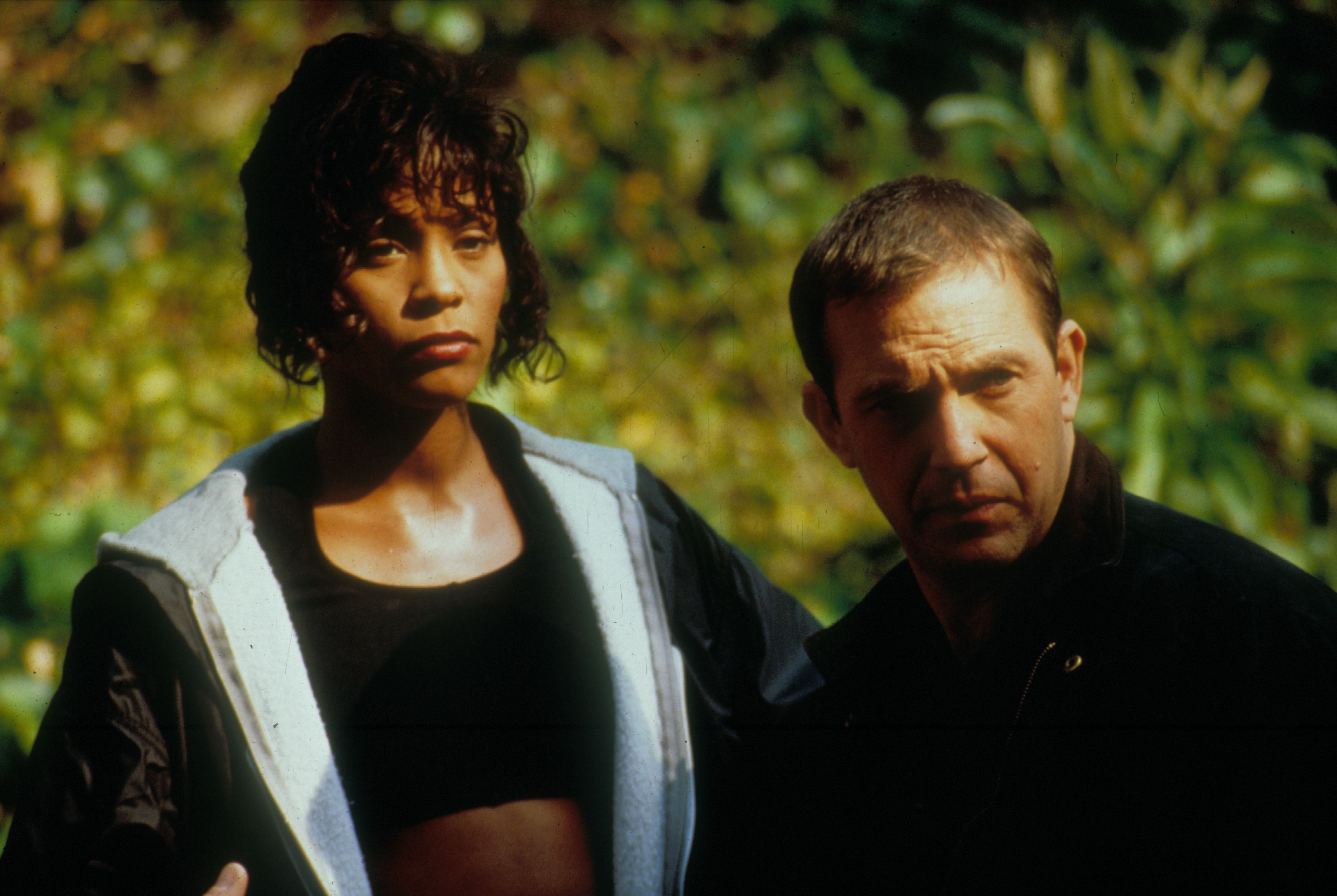
It’s the biggest movie soundtrack of all time and the 15th best-selling album in the US. Whitney Houston breathed new life into songs by Dolly Parton (“I Will Always Love You”) and Chaka Khan (“I’m Every Woman”). Five of the songs performed by Houston were hits: “I Will Always Love You”, “I’m Every Woman”, “I Have Nothing”, “Run to You” (both Oscar-nominated), and “Queen of the Night”
34. Magical Mystery Tour (1976)
Yes, it was the Fab Four’s worst film, but the soundtrack is packed with some of their best songs: “I am the Walrus”, “She Loves You” and “Hello, Goodbye”. Where A Hard Day’s Night, Yellow Submarine and Help were undoubtedly more influential on popular culture, Magical Mystery Tour is the most fun to listen to – regardless of how much effort is required to watch.
33. Belly (1998)
Belly’s soundtrack captured the East Coast rap scene as it stepped towards a grittier sound and underwent one of the most important transitions for any genre in music history – with contributions from the likes of D’Angelo, members of the Wu-Tang Clan, Nas and Jay-Z.
32. Donnie Darko (2001)

Richard Kelly’s dark and gloomy film starring a young Jake Gyllenhaal remains one of the few to truly capture what it means to be a confused, alienated teenager. With composer Michael Andrews, writer and director Richard Kelly picked some of the most angst-ridden songs of the Eighties and Nineties, by bands including Echo and the Bunnymen, Duran Duran, Tears for Fears and The Pet Shop Boys. It ends on a masterstroke: Michael Andrews performing a stark, trembling cover of Tears for Fears’ “Mad World”
31. Midnight Cowboy (1969)
Midnight Cowboy – the first X-rated film to win the Oscar for Best Picture – took original material and pre-existing songs to complement the theme of a naïve cowboy/wannabe sex worker trying to survive in a big city, and the juxtaposition between Jon Voight’s character Joe Buck and dying con artist “Ratso” (Dustin Hoffman). Fred Neil’s song “Everybody’s Talkin’”, which underscores the first act, won the Grammy Award for Best Contemporary Vocal Performance, Male (for Harry Nilsson).
30. Lost Highway (1997)
Trent Reznor’s work on David Lynch’s 1997 neo-noir movie is loaded with stark electronics and instrumentals by Angelo Badalamenti. In between, you have Smashing Pumpkins, Nine Inch Nails and, of course, This Mortal Coil’s “Song to the Siren” – a track that caught Lynch’s attention and inspired him to co-write two albums for Twin Peaks singer Julee Cruise.
29. The Last Days of Disco (1998)
Whit Stillman’s 1998 indie-classic starred then-virtual unknowns Kate Beckinsale and Chloë Sevigny as friends and roommates in early-Eighties New York. Add that to a wall-to-wall disco soundtrack and you’ve got an intoxicating film with classic dancefloor anthems from Chic, Diana Ross, and Sister Sledge belted out one after the other.
28. Singles (1992)
In the summer of 1992, the soundtrack to a film that flopped at the box office offered the masses the gateway they needed into the Seattle grunge scene. Cameron Crowe wanted the Singles soundtrack to be “more like a simple mixtape of Seattle’s finest”, and ended up with a veritable who’s-who of every important band from that moment: Pearl Jam, Alice in Chains, Smashing Pumpkins, Soundgarden and Mudhoney… everyone apart from Nirvana. Almost three decades after the film’s release, the soundtrack serves as a musical landmark.
27. Cruel Intentions (1999)
Adapting classic literary texts into modern-day high-school scenarios was a big thing in the Nineties. Cruel Intentions came from Pierre Choderlos de Laclos’s 18th-century work, Les Liaisons Dangereuses, and starred Sarah Michelle Gellar and Ryan Phillippe as Kathryn and Sebastian: two spoilt, bored rich kids toying with the naïve and virtuous Annette (Reese Witherspoon). John Ottman was originally enlisted to compose the score, but producers decided that wouldn’t sit well with the teenage demographic it was going for and instead plumped for a soundtrack of Placebo, Blur, Skunk Anansie, Aimee Mann and Counting Crows.
26. Flashdance (1983)
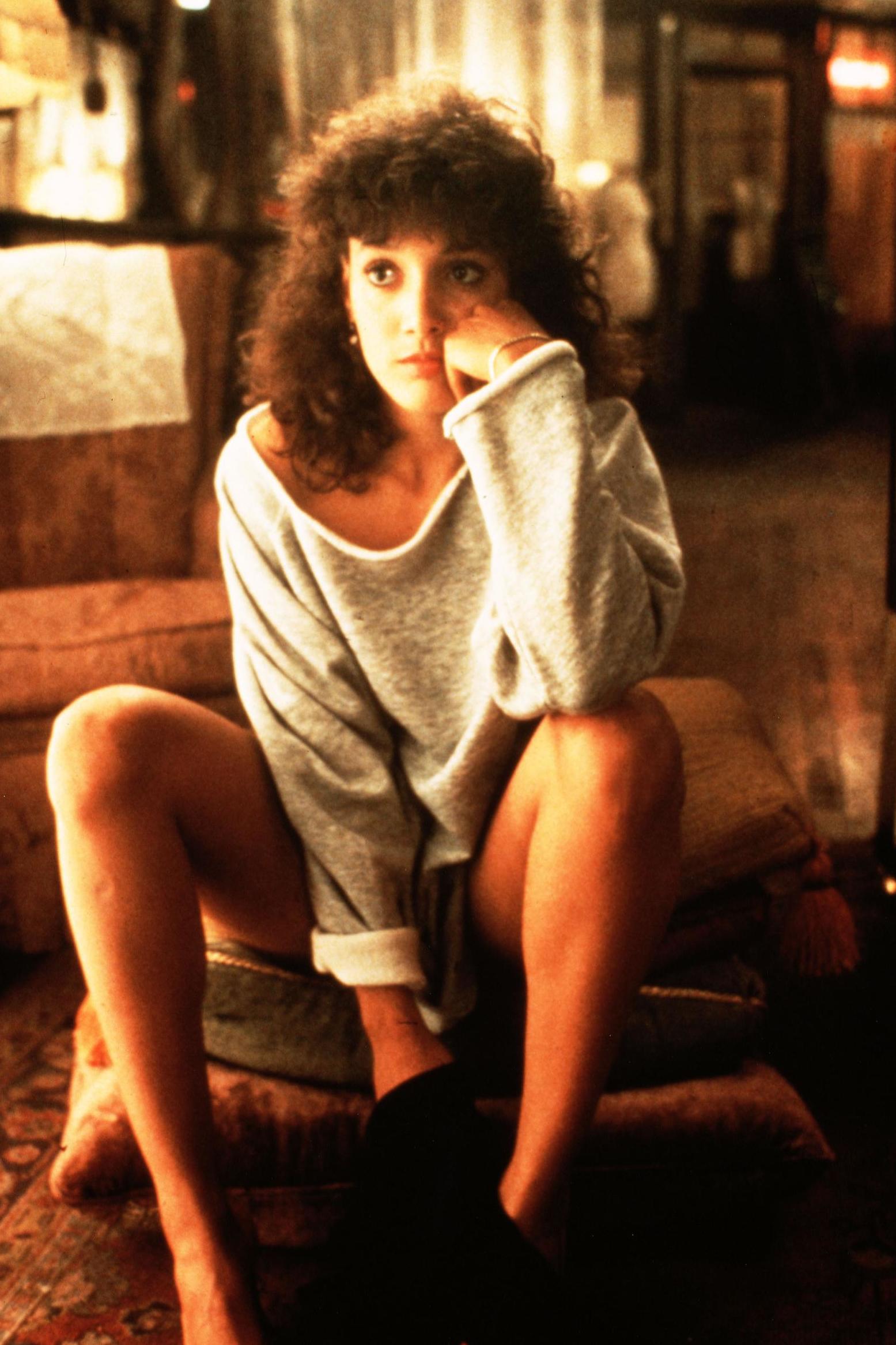
Flashdance, the first collaboration between producers Don Simpson and Jerry Bruckheimer, is important because it actually changed how some of the most popular films of the Eighties were shot. For each song featured in the film there is a scene presented in the same way as a music video, like the use of “Maniac” as Alex (Jennifer Beals) trains for her dance audition, or the lead song of the film “What a Feeling”, which plays during the opening montage of the steel mill.
The latter, written by Italian composer Giorgio Moroder, Keith Forsey and Irene Cara (who performed the track), became the singer’s first and only number one hit. It also won the Academy Award for Best Original Song, a Golden Globe, and a Grammy for Best Female Pop Vocal Performance. Michael Sembello’s “Maniac”, meanwhile, went on to become one of the highest-grossing songs ever written for a film.
25. Half Nelson (2006)
While Half Nelson isn’t as highly regarded as Lars and the Real Girl or Drive, it’s the one that helped Ryan Gosling break away from his status as the heartthrob from The Notebook. It also has a phenomenal soundtrack steered by Broken Social Scene, whose brilliant collection of B-sides proved indispensable for this film about a drug-addicted middle-school teacher struggling to deal with the aftermath of a breakup. In between those tracks you’ve got gritty hip hop that shows Dan’s crossover into the world of his pupil, the stoic Drey (Shareeka Epps) – from New York collective Dujeous to Rhymefest.
24. Lost in Translation (2003)

Sofia Coppola is a queen of the needle-drop. The Lost in Translation soundtrack was so influential that several critics actually suggested it had something to do with the rebirth of shoegaze in the mid-Noughties. Either way, there a few better songs to close a film than Jesus and Mary Chain’s “Just Like Honey”, that plays just after the kiss goodbye between Bob (Bill Murray) and Charlotte (Scarlett Johansson) and that indecipherable whisper.
23. Romeo + Juliet (1996)
Former Massive Attack producer Nellee Hooper is the brainchild behind one of the greatest film soundtracks of all time. Working with composers Craig Armstrong and Marius de Vries, he beta-tested many of the tracks that ended up on the album by playing them at 5am to afterparty guests at his house in London. Others took direct inspiration from Shakespeare’s original text, with Justin Warfield of One Inch Punch and Art Alexakis of Everclear both allowed to watch early edits of scenes from the film to inspire them. Like the soundtracks for Kill Bill, Trainspotting and Marie Antoinette, it’s the vast eclecticism of the songs featured in Romeo + Juliet that make you remember each one, and the scene where each is used, for years after first seeing the film.
22. The Harder They Come (1973)
As well as making a star of reggae singer Jimmy Cliff, both the film and soundtrack for The Harder They Come exposed mainstream audiences to the emerging Kingston recording industry. Only the title track was an original recorded by Cliff for the movie; the rest were singles released in Jamaica between 1967 and 1972, including Cliff’s superb “You Can Get it if You Really Want”, plus songs from greats such as Toots and the Maytals and Desmond Dekker.
21. The Beach (2000)
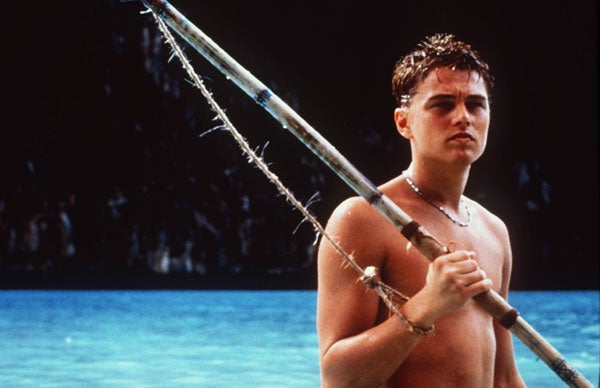
The Beach soundtrack is what gives this film starring a fresh-faced Leonardo DiCaprio its vitality, capturing the essence of the trance music heard during Thai beach parties. Music supervisor Pete Tong said the songs, including Moby’s “Porcelain” and Dario G’s “Voices”, are what make the film “watchable time and time again”. The way the music progresses mirrors the grit and darkness that begin to make themselves known in what at first appeared to be paradise.
20. Pretty in Pink (1986)
John Hughes nailed the formula for teen movies soundtracked by angsty British post-punk rock. Echo & the Bunnymen, The Smiths, Orchestral Manoeuvres in the Dark and New Order all appeared on what is essentially Hughes’s checklist of what the cool kids jammed to in the Eighties.
19. Black Panther (2018)
Curated and co-executive produced by Kendrick Lamar, the Black Panther soundtrack enlisted a select group of extraordinary talent that would understand the themes in the film, from Anderson .Paak to Earl Sweatshirt. Leading this group is Lamar himself, undoubtedly the best choice of artist for a film that explores responsibility, black power, family dynamics and loyalty. Where Jay-Z failed to step aside on the Great Gatsby soundtrack and let other artists do their thing, Lamar is more interested in highlighting the skills of his fellow artists, like South African singer Babes Wodumo, or Jorja Smith. It’s true that the Black Panther album pales in comparison to most of Lamar’s solo work, but it’s rare to see a soundtrack that so deeply considers the subject matter it has been presented with.
18. Dazed and Confused (1993)
With the Dazed and Confused soundtrack, director Richard Linklater highlighted an era of raucous butt-rock anthems and stoner jams, from Alice Cooper’s “School’s Out” to Ted Nugent’s “Stranglehold”.
17. Marie Antoinette (2006)

In a year that was saturated with period dramas, from a remake of Jane Eyre to The Queen, Marie Antoinette stood out for its highly stylised depiction of a well-known historical figure. Director Sofia Coppola includes The Strokes, New Order, Adam and the Ants and The Cure among her needle-drop moments, along with period music by Baroque composers Vivaldi and Couperin. By doing so, Coppola gave her audience something to relate to, and a soundtrack that suits Marie Antoinette’s rebellious teenage spirit. The use of “I Want Candy” by Bow Wow Wow for the famous shopping scene (complete with purple Converse) drew a comparison between contemporary Western consumerism and the outrageous decadence at Versailles in the 18th century.
16. Call Me By Your Name (2017)
The Call Me By Your Name soundtrack wins for its three songs by Sufjan Stevens alone. The American singer-songwriter remixed his 2010 track “Futile Devices” and also wrote two new songs specifically for the film, “Visions of Gideon” and “Mystery of Love”, the latter of which was nominated for the Best Original Song Oscar. Director Luca Guadagnino worked with film editor Walter Fasano and music supervisor Robin Urdang, with all of them understanding that music would play a “vital role” in the movie. Guadagnino wanted the music to give the film a “precise identity” that would act as a “voice” in the movie, he told Billboard. “That’s when I thought of Sufjan Stevens.” Other tracks, like the buoyant “Love My Way” by The Psychedelic Furs, captured the wistful, heady nature of hot, endless summers in Italy.
15. Straight Outta Compton (2015)
A biopic about the rise and fall of gangsta rap collective NWA was always going to be good – especially if its former members were involved in its production. Even so, the meticulous care with which the soundtrack for Straight Outta Compton was assembled is impressive, and provides backdrop for an origin story about some of the most influential and important artists of the Eighties and Nineties.
14. 500 Days of Summer (2009)
This offbeat romantic comedy has developed cult status over the years and stood out at the time for its original take on the “boy meets girl” genre. Music is what first drew characters Summer (Zoe Deschanel) and Tom (Joseph Gordon Levitt) together (they start talking after Summer overhears The Smiths playing on Tom’s MP3 player). Each song mirrors the various highs and lows the characters go through, helped by director Marc Webb’s background making music videos for indie pop artists. Regina Spektor’s song “Hero” is the perfect backdrop for the scene where Tom realises his hopes of getting back with Summer are futile. The track closes on the lyric “no one’s got it all”, a very literal way of pointing out that not everyone gets the fairytale ending they hope for.
13. Baby Driver (2017)

A veritable smorgasbord for any self-respecting music nerd: Baby Driver is a brilliant example of the perfect movie soundtrack. Ansel Elgort stars as “Baby”, a skilled getaway driver who relies on a steady stream of music in order to counteract the effects of tinnitus.There are vintage cuts from The Beach Boys, Beck and Barry White, and Seventies rock gems by Queen and Golden Earring. Yet it’s “Bellbottoms” from the Jon Spencer Blues Explosion album Orange that initially inspired the film. A then 21-year-old Edgar Wright was sitting in his bedroom, “completely broke”, when he began to visualise a car chase set to the songs on that album. “It was almost like the closest thing to having action-movie synesthesia, [where] I would listen to that song and imagine this car chase.” he said.
12. American Graffiti (1973)
George Lucas managed to amplify the already-nostalgic mood on his “summer of 62” film by choosing songs from the mid-to-late Fifties as the lead tracks on the American Graffiti soundtrack. Songs from Buddy Holly and Chuck Berry to The Beach Boys are all presented by legendary disc jockey Wolfman Jack.
11. 10 Things I Hate About You
If Pretty in Pink captured teenage angst in the Eighties, 10 Things I Hate About You achieved it for the decade that followed. Unlike many films of the Nineties, which attempted to capitalise on the major rock stars of the day, 10 Things managed to select what is essentially a list of flash-in-the-pans, from Letters to Cleo and Semisonic to Save Ferris. Of course, there was plenty of Riot Grrl music to compound Kat’s (Julia Stiles) tempestuous nature. When you watch the film today, it only serves to fuel that feeling of nostalgia and add to its ever-growing cult status.
10. Do the Right Thing (1989)
Spike Lee’s Brooklyn-based masterpiece is set to a breathtaking jazz score conducted and composed by his father, Bill Lee. It’s also punctuated by summer jams and blissful ballads, along with the urgency of Public Enemy’s “Fight the Power”, which is played from Radio Raheem’s boombox.
9. Eden (2014)
French filmmaker Mia Hansen-Love’s character Paul (Felix de Givry) is based on the experiences of her brother Sven – a relatively popular DJ who had to look on as his peers, including Daft Punk, achieved global fame by pioneering the early EDM scene. Its soundtrack offers a comprehensive look at the house, jungle and garage music that was the lifeblood of Paris youth culture in the Nineties, but is also carefully chosen to match the situation of the film’s characters. Daft Punk’s “Veridis Quo” signals a mood-change at a celebratory dinner, while “Happy Song” by Charles Dockins conveys Paul’s euphoria as his hero Tony Humphries works the decks in a New York club.
8. The Graduate (1968)
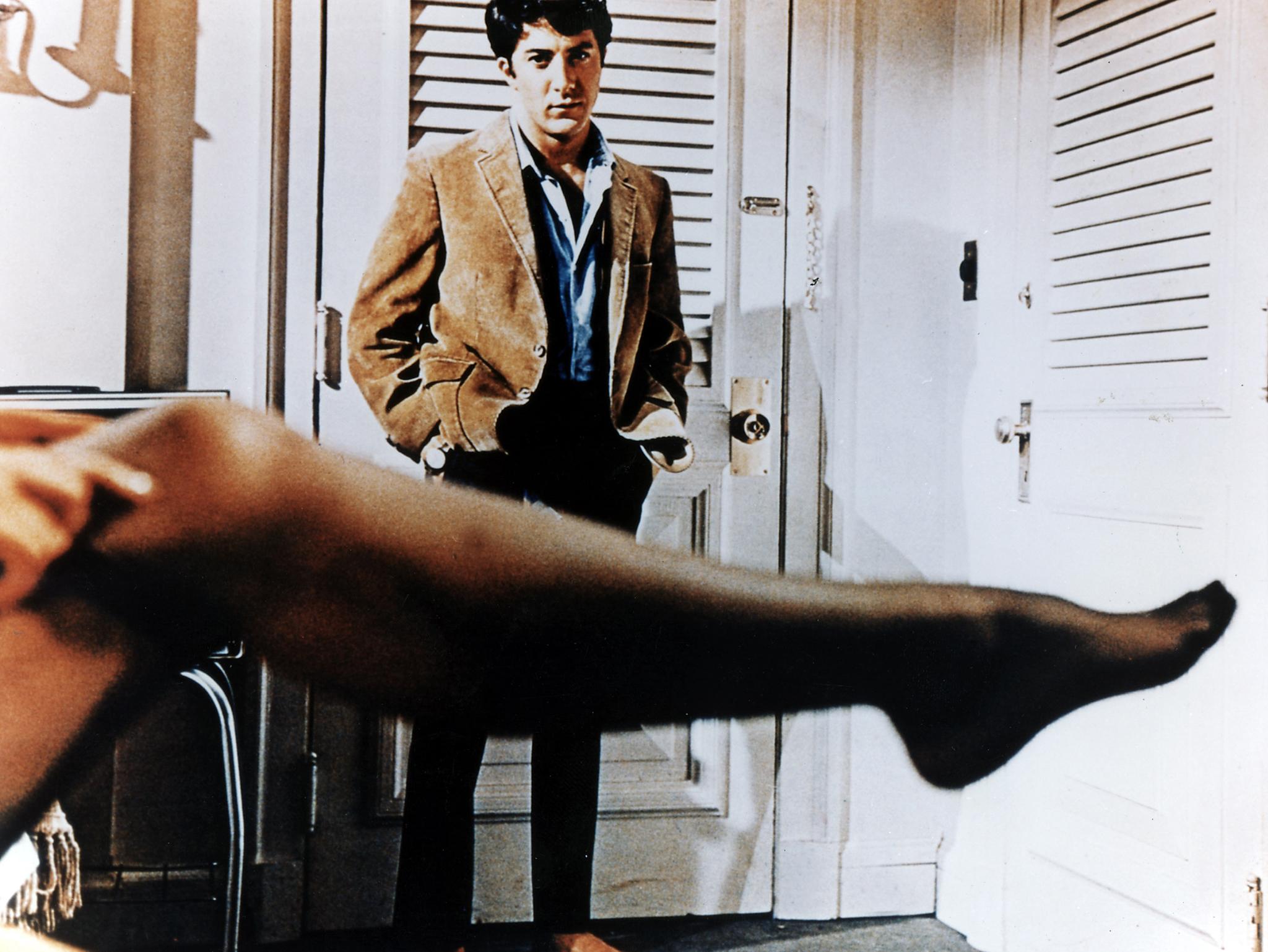
An early example of a film that came to be defined by its music. Simon & Garfunkel’s music was the perfect fit when it came to music that would highlight Dustin Hoffman’s character’s feelings of isolation, particular whenever “The Sounds of Silence” was used.
7. Super Fly (1972)
Curtis Mayfield’s third studio album was released as the soundtrack to the Blaxploitation film of the same name. It was groundbreaking for its themes of poverty and drug abuse which made the record stand out among the less socially aware music of its time. It would go on to influence everyone from TV score composers to soul singers in the decades that followed.
6. Guardians of the Galaxy (2014)

How do you make a film with aliens, a talking tree and an anthropomorphic tree feel believable? This is the question director James Gunn asked himself during production for Guardians of the Galaxy, before deciding on a mixtape of Sixties and Seventies classics, many of which would be played on the lead character’s Walkman. Arguably the best moment is right at the beginning of the movie, where Quill [Chris Pratt] dances through a deserted temple on a post-apocalyptic planet to Redbone’s “Come and Get Your Love”, using a very angry lizard like you would a hairbrush for lip-syncing in front of the mirror. “The music and the Earth stuff is one of those touchstones that we have to remind us that, yeah, Quill is a real person from planet Earth who’s just like you and me,” Gunn explained. “Except he’s in this big outer space adventure.”
5. Trainspotting (1996)
The soundtrack for Danny Boyle’s adaptation of Irvine Welsh’s novel was so popular it promoted a release of a second soundtrack a year later, in 1997. After two decades, it still holds up as one of the greatest and most lovingly curated collections of songs in music history. The use of “Lust for Life” in the opening scene triggered something of a career renaissance for Iggy Pop. There’s a romanticised overdose set to Lou Reed’s “Perfect Day”, and Heaven 17 soundtrack a club scene with “Temptation”. A particularly disgusting toilet scene is set to Brian Eno’s “Deep Blue Day” and French composer Georges Bizet’s “Carmen Suite No 2”.
4. Pulp Fiction (1994)
Quentin Tarantino didn’t commission a traditional film score for what is arguably his most adored film, 1994’s Pulp Fiction. Instead, he mixed American surf music and classic rock and roll, including the late Dick Dale’s “Misirlou” in the iconic opening scene. The track was suggested to Tarantino by musician Boyd Rice via their mutual friend Allison Anders. The soundtrack had such an impact – reaching No 21 on the Billboard 200 and selling more than two million units by 1996 – that it was credited with “reinvigorating” surf rock and sparking a trend by advertisers to use it in their commercials, “to help sell everything from burritos to toothpaste”. Chuck Berry’s song “You Never Can Tell”, also known as “C’est la Vie”, also enjoyed a resurgence in popularity thanks to its use in the famous dance scene with Mia Wallace (Uma Thurman) and Vincent Vega (John Travolta).
3. Almost Famous (2000)
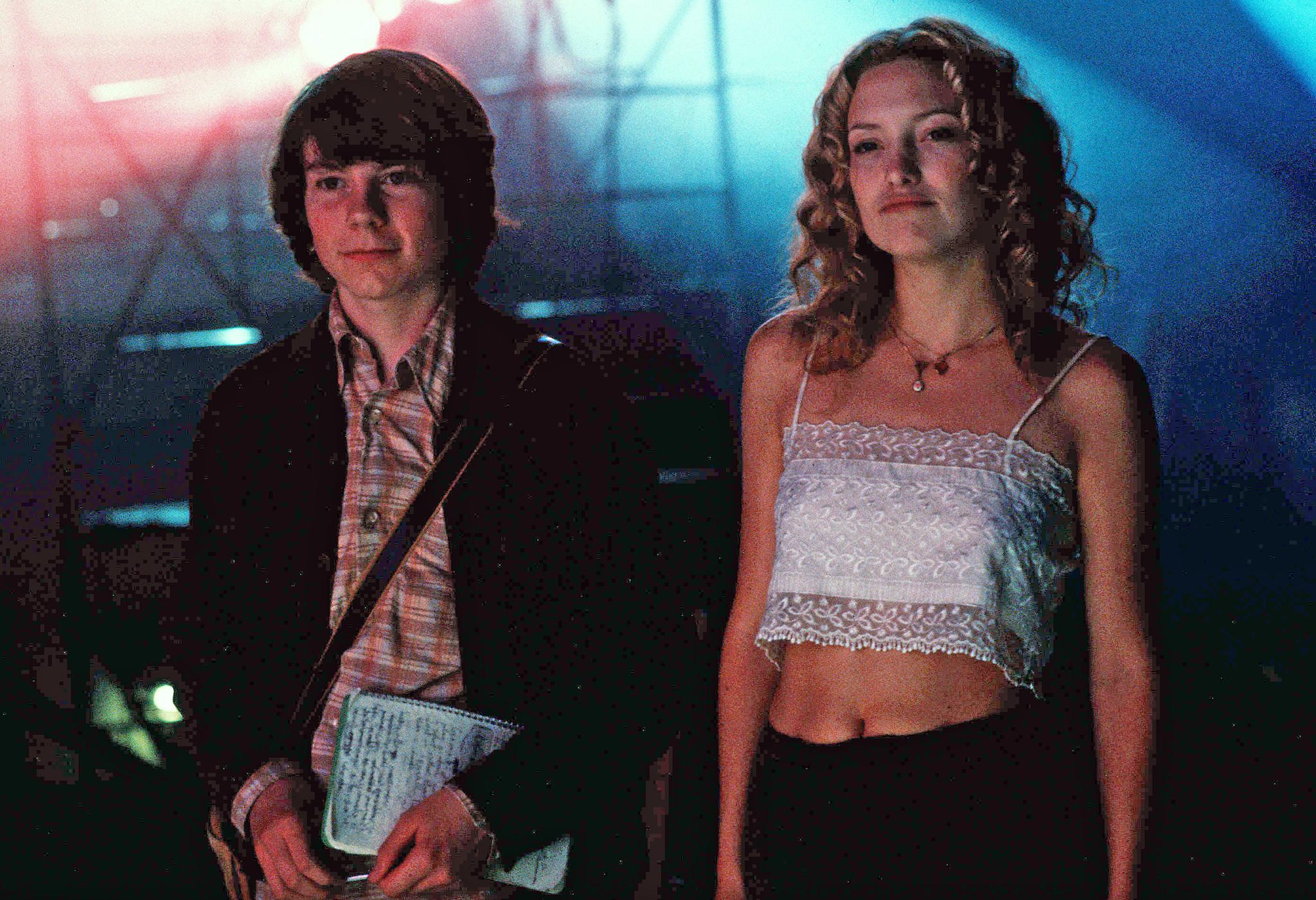
Neither Cameron Crowe nor his music coordinator Danny Bramson wanted to pander to the charts for this story based on the director’s years as a teenage rock journalist. If anything, the duo avoided tracks that seemed like potential radio favourites, choosing lesser-known songs like “Sparks” from The Who’s album Tommy as the theme for Crowe’s alter-ego William Miller.
The music is essentially a whole other character – a narrator who offers running commentary on the scenarios the others find themselves in. And there are few scenes more uplifting than the one in Almost Famous where, having retrieved guitarist Russell Hammond (Billy Crudup) from a drugs and alcohol-fuelled party, the fictional band Stillwater and their crew take up a rowdy singalong to Elton John’s “Tiny Dancer”.
2. Purple Rain (1984)
Prince’s acting debut just so happened to produce some of his best music. The concept for the plot, about a talented but tortured frontman of a band in Minneapolis, was developed by Prince during his 1999 tour. Purple Rain was one of the 10 highest-grossing films of 1984 and shows Prince as his most outrageous self.
1. Kill Bill Vol. 1 (2003)
The Wu-Tang Clan’s RZA worked with director Quentin Tarantino on the collection of music that would accompany Uma Thurman’s character The Bride on her gory quest for revenge. What is particularly brilliant is the alternation between non-diegetic sound and the silence that precedes (and is sustained during) some of the most tense action sequences. When it comes to the most crucial battle between O-Ren Ishii and The Bride at the end of the film, they first chose the disco flamenco intro from Santa Esmeralda’s Latin arrangement of “Don’t Let Me Be Misunderstood”.
At the bloody conclusion, where O-Ren falls, RZA and Tarantino used Meiko Kaji’s “The Flower of Carnage”, the lyrics for which could have been written especially for The Bride. The song was first used in the 1973 martial arts film Lady Snowblood, in which Kaji also starred. She sings: “I’m a woman who walks at the brink of life and death/ Who emptied my tears many moons ago” and then: “I’ve immersed my body in the river of vengeance.”
This article was originally published in 2019

